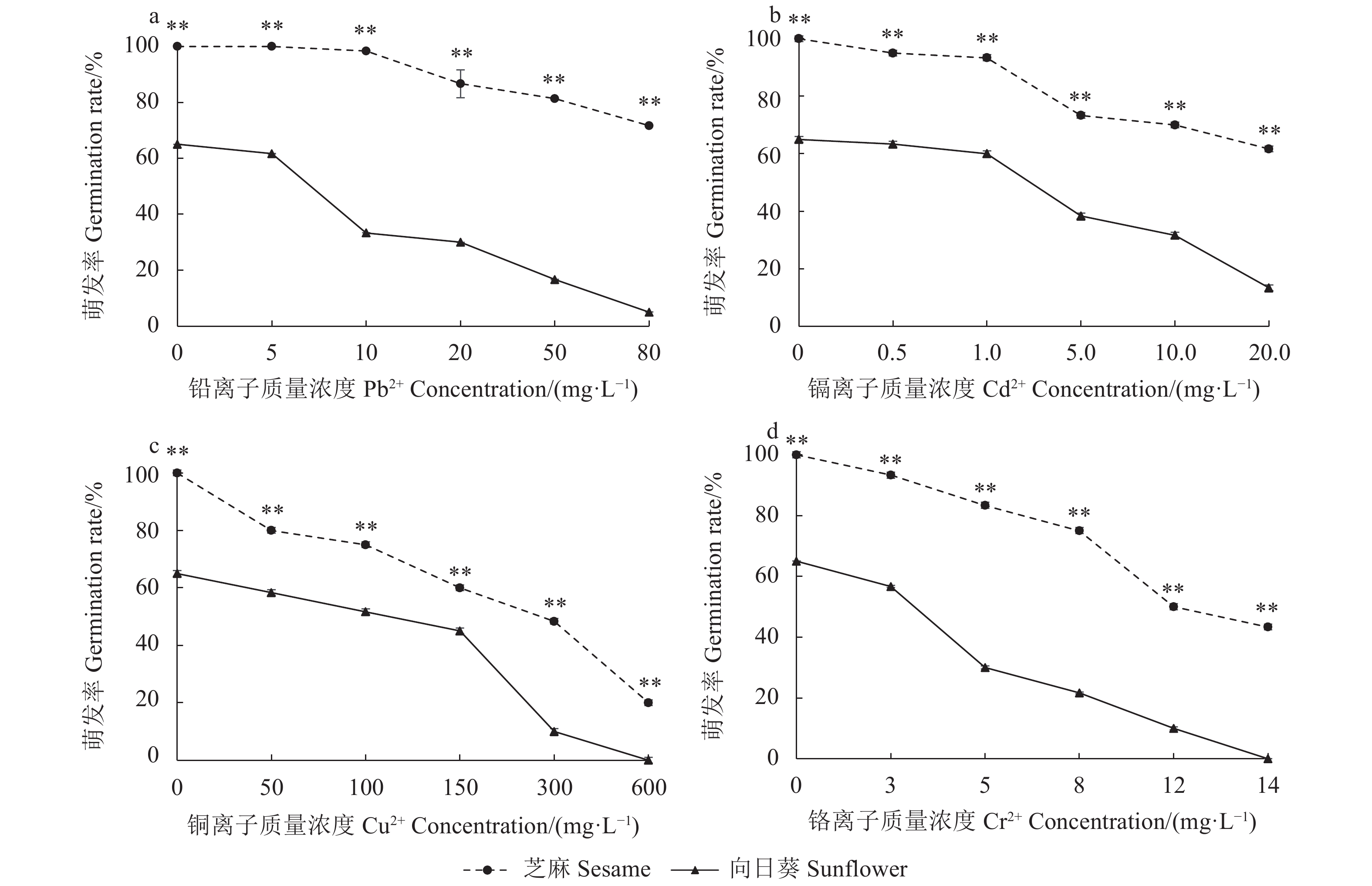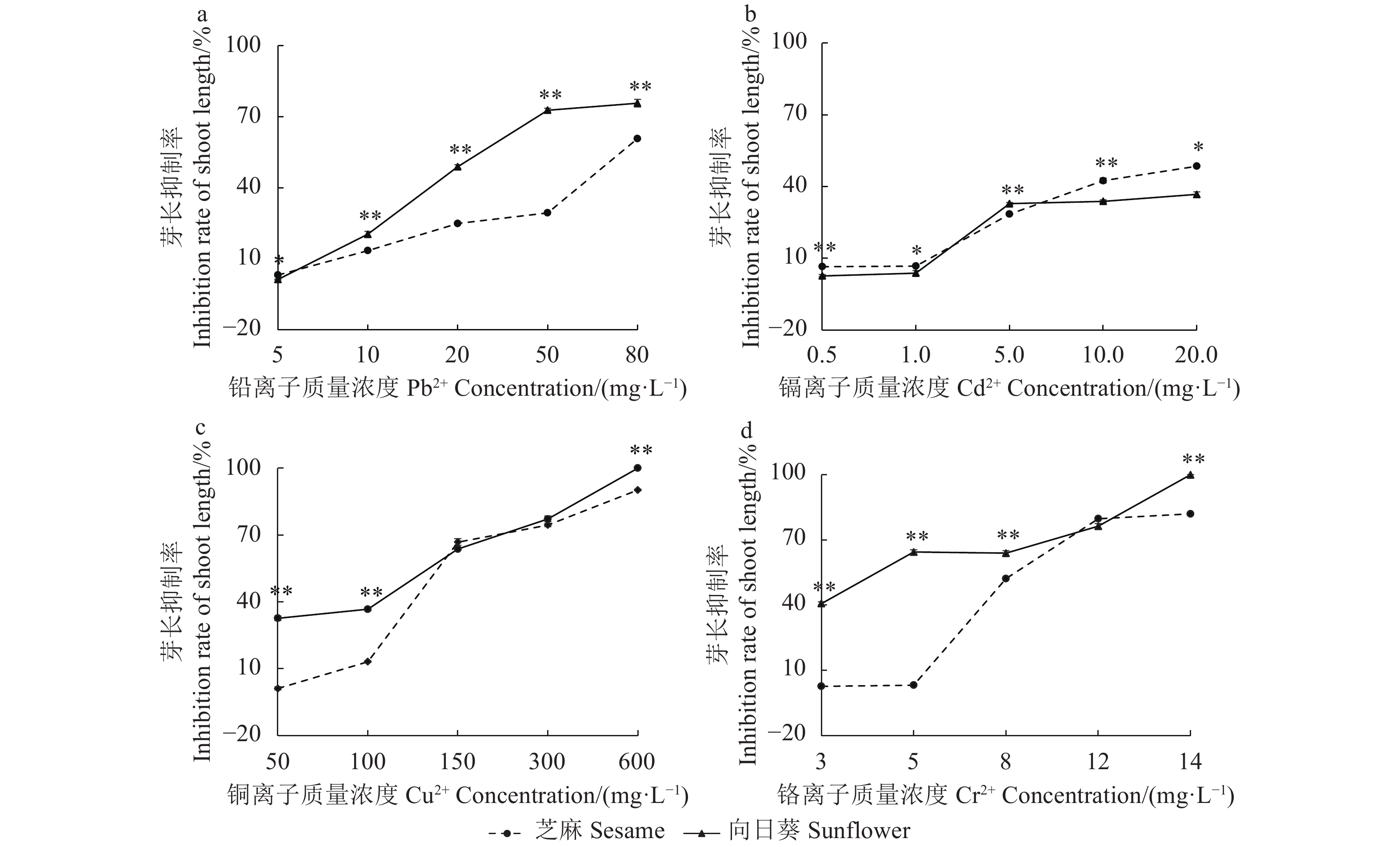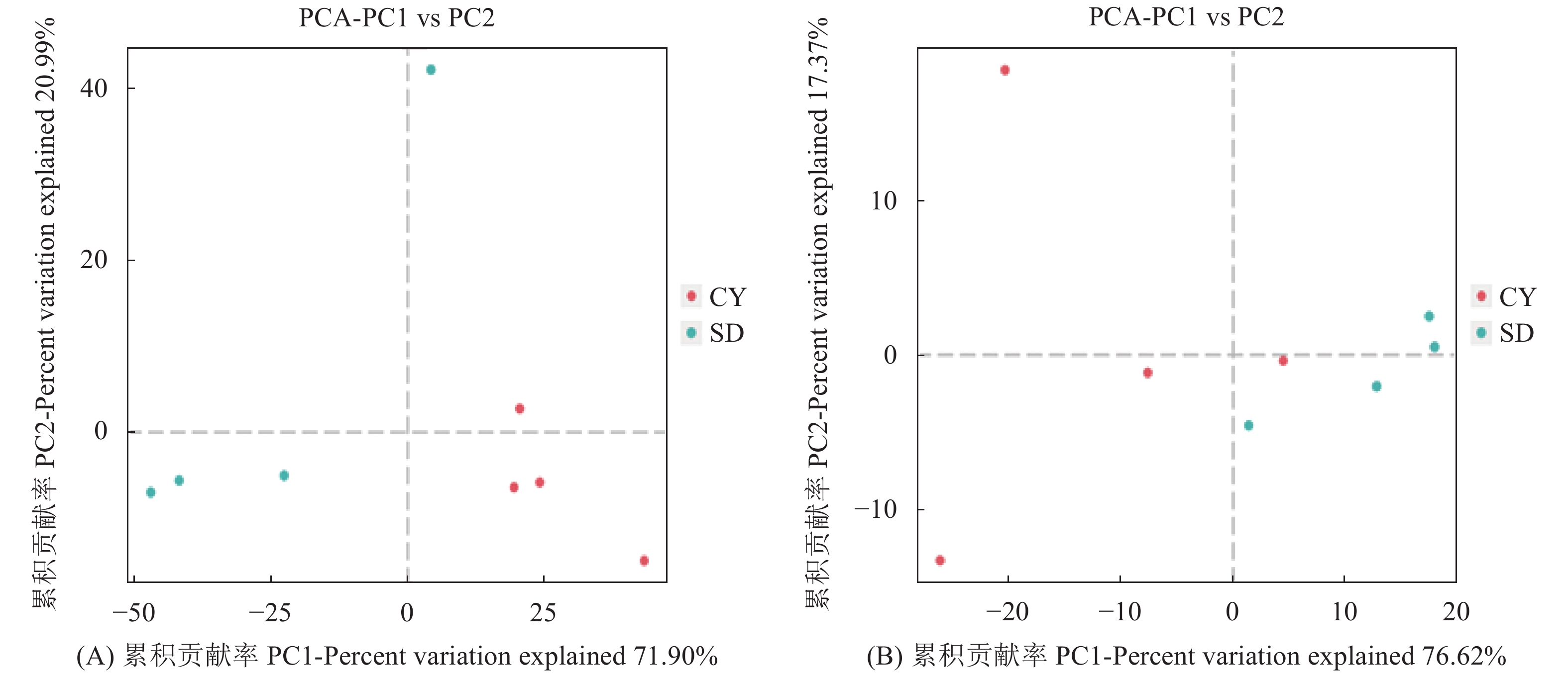Diversity of Ammonia-oxidizing Microorganisms in Soils of Different Land Use on Wuyi Mountains
-
摘要:目的 研究不同土地利用方式下土壤氨氧化微生物多样性的季节响应,以期了解武夷山不同土壤利用类型氨氧化微生物群落特征和季节变化。方法 在福建省武夷山的常绿阔叶林区域,分别采集同一纬度下未被开发利用的原始林地和已被开发利用的茶园土壤,利用Illumina Hiseq高通量测序技术对土壤氨氧化微生物的相对丰度及多样性进行分析,同时测定土壤理化性质,并对二者进行关联性分析。结果 (1)武夷山常绿阔叶林土壤含有丰富的氨氧化微生物资源,不同土地利用方式下土壤氨氧化微生物在Family水平相似,主要包括氨氧化古菌界的Unclassified Candidatus Nitrososphaera、Unclassified Crenarchaeota、Unclassified Thaumarchaeota、Nitrosopumilus、Others;氨氧化细菌界的Nitrosomonas、Nitrosospira、Unclassified Nitrosomonadaceae、Others,其中茶园拥有独特的Nitrosovibrio(亚硝化叶菌属)存在。(2)武夷山林地和茶园氨氧化微生物相对丰度有显著变化且随季节变化显著。(3)土壤氨氧化微生物群落结构与环境因子的关联性分析表明,不同的环境因子对土壤氨氧化细菌和土壤氨氧化古菌的影响不同,且不同季节的主要影响因子也存在差异,有效钾是影响氨氧化细菌变化的主要环境因子,而铵态氮是影响氨氧化古菌的主要环境因子。结论 随季节变化武夷山常绿阔叶林土壤氨氧化微生物多样性呈现出规律性变化,不同土地利用方式对氨氧化微生物种类影响不大,但对其种群的相对丰度及季节相对丰度影响较大。
-
关键词:
- Illumina Hiseq高通量测序 /
- 不同土地利用方式 /
- 氨氧化细菌 /
- 氨氧化古菌
Abstract:Objective Characteristics and seasonal changes of ammonia-oxidizing microorganism (AOM) community in soils under different land uses on Wuyi Mountains were studied.Method Soil specimens of virgin woodland and tea plantations in evergreen broad-leaf forest growing zones at same latitude on Wuyi Mountains in Fujian were collected for Illumina Hiseq high-throughput sequencing to analyze the relative abundance and diversity of AOMs in the region. The data were applied for a correlation analysis with the physiochemical properties of the local soil.Result (1) An abundant resource of AOMs was found in the soils. The microbial species in soil were similar despite varied land uses. The archaea domain of the AOMs included Unclassified Candidatus Nitrososphaera, Unclassified Crenarchaeota, Unclassified Thaumarchaeota, Nitrosopumilus, and others, while the bacteria consisted of Nitrosomonas, Nitrosospira, Unclassified Nitrosomonadaceae and others. At the tea plantations, a unique species, Nitrosovibrio, was found. (2) The relative abundance of AOMs in the region had significantly changed over time and was affected by the seasons. (3) The environmental factors affected the bacteria and the archaea of the AOM community in soil differently. The major influential factors also varied in accordance with seasons; and, potassium in soil affected mainly the bacteria, while ammonium nitrogen the archaea.Conclusion Regular seasonal changes on the AOM community in the soil of evergreen broad-leaf forest zone on Wuyi Mountains were observed. Although the microbial species in the soils did not differ significantly by the land use, their relative abundance varied significantly seasonally and by the land utilization. -
0. 引言
【研究意义】耕地在保障食品产量中起决定性的作用,然而目前我国和全世界人口仍在增加,耕地面积却在不断减少。由于生产、生活废物的不当处置,导致农田重金属污染在全国范围内普遍存在[1],其中铅、铜、镉、铬污染是最为常见的类型[2]。重金属污染物通过吸收富集于农作物体内,影响农产品的品质,对人体健康造成潜在的威胁。在土壤重金属污染加剧和耕地紧缺的双重压力下,如何综合利用重金属污染耕地成为普遍面临的难题。【前人研究进展】目前,有关重金属污染农耕地综合利用方面的研究,一方面集中在通过施用生物质材料、钝化剂降低重金属污染物在农作物中的富集;一方面集中在利用超富集植物吸收土壤中的重金属污染物,以此实现农业用地土壤重金属污染物的减量化。虽有部分研究发现,利用拟芥蓝[3]、菜心[4]等对重金属污染物吸收较少,或吸收的重金属主要集中在根、茎等不可食用部分的特性开发利用重金属污染耕地[5],但迄今这方面研究的主要作物是蔬菜,无法解决大量的农耕地重金属污染问题。对于农作物而言,重金属主要积累在植物的细胞膜和蛋白质中[6],在脂肪细胞中的积累情况报道较少。有研究表明,油料作物在重金属污染农耕地的综合利用中有着重要的潜在价值。如:受重金属污染的花生和油菜种子毛油中的重金属含量符合国家标准——《食用油卫生标准》[7];在砷矿产区的8种植物油中砷的含量均未超过国家标准[8];即使油料作物的种子重金属含量超标,也可以利用这些油生产生物柴油[9]。【本研究切入点】芝麻和向日葵是我国主要的油料作物,主要种植于我国的河南、山东、河北、云南等省份,而这些省份均存在大量的重金属污染耕地。芝麻和向日葵在生理上存在明显的差异,芝麻属于浅根系作物,一方面土壤胁迫因子对其影响相对较小,同时也存在对于干旱和渍涝等水分逆境敏感的特征[10];而向日葵属于深根型作物,一方面土壤环境因子对其作用更强,同时其对干旱、盐等胁迫具有较强的耐受性[11]。这暗示芝麻和向日葵对重金属污染的适应性可能存在差异,其适合度在不同浓度重金属污染下可能发生相对变化。目前有关何种油料作物更适合于何种重金属污染耕地综合利用的研究鲜见报道。【拟解决的关键问题】本研究通过对比分析芝麻、向日葵的主要栽培品种在Pb2+、Cd2+、Cr6+、Cu2+胁迫下的种子萌发和幼苗生长的表现,探究适合于在重金属污染耕地种植的油料作物,为重金属污染耕地的综合利用提供理论支持。
1. 材料与方法
1.1 试验材料
芝麻和向日葵主要种植在我国北纬35°~55°的广大范围,在生境上有很大的重叠。本研究选用的芝麻品种为豫芝8号,向日葵品种为油皇后958,均为我国产区主栽品种。本研究选择形状大小基本一致、颗粒健康饱满的种子进行试验。
1.2 试验方法
为了探究2种主要油料作物在不同质量浓度重金属污染下相对适合度的变化规律,本研究根据国内农田土壤重金属污染物浓度范围设定试验处理。铅(Pb2+)的质量浓度设置为0.0、5.0、10.0、20.0、50.0、80.0 mg·L−1;镉(Cd2+)的质量浓度设置为0.0、0.5、1.0、5.0、10.0、20.0 mg·L−1;铬(Cr6+)的质量浓度设置为0.0、3.0、5.0、8.0、12.0、14.0 mg·L−1;铜(Cu2+)的质量浓度设置为0.0、50.0、100.0、150.0、300.0、600.0 mg·L−1。每个处理随机选取20粒种子,用10%的双氧水消毒15 min,超纯水冲洗5次,浸泡48 h,而后均匀散布在直径9 cm、有两层滤纸的培养皿中,用上述重金属溶液将滤纸润湿至饱和,每个处理3次重复。浸润后的种子盖上培养皿盖后置于恒温箱中30 ℃培养,萌发周期为20 d。
1.3 测定方法
用游标卡尺测量幼苗的根长、芽长,计算平均值[12]。发芽率(RG)、根长抑制率(Rri)、芽长抑制率(Rgi)[13-14] 计算方法如下:
RG=(NG/N)×100% (1) Rri=[(lr0−lr)/lr0]×100% (2) Rgi=[(lg0−lg)/lg0]×100% (3) 式中:NG为萌发种子数,N为试供种子数,lr0为空白组根长,lr为处理组根长,lg0为空白组芽长,lg为处理组芽长。
1.4 数据分析
用Excel 2016进行数据整理和图表绘制,用R软件(版本号:3.5.0)统计不同重金属质量浓度下两种油料作物种子萌发率、根长抑制率、芽长抑制率的差异。
2. 结果与分析
2.1 不同处理对芝麻、向日葵种子萌发率的影响
由图1可知,随着重金属质量浓度的增加,芝麻和向日葵种子的萌发率随之降低。4种重金属不同质量浓度处理下,2种油料作物的萌发率均存在极显著差异(P<0.01)。高质量浓度的Pb2+(80.0 mg·L−1)处理,芝麻、向日葵萌发率分别比对照(0.0 mg·L−1)下降28.33%、60.00%;高质量浓度的Cd2+(20.0 mg·L−1)处理,芝麻、向日葵萌发率分别比对照下降38.33%、51.67%;高质量浓度的Cu2+(600 mg·L−1)处理,芝麻、向日葵萌发率分别比对照下降80.00%、100.00%;高质量浓度的Cr6+(14 mg·L−1)处理,芝麻、向日葵萌发率分别比对照下降56.67%、100.00%。这说明芝麻种子萌发对4种重金属的耐受性更强,向日葵种子的萌发对4种重金属胁迫更加敏感。
2.2 重金属对芝麻、向日葵幼苗发育和形态建成的影响
由图2看出,重金属胁迫下芝麻、向日葵幼苗生长均受到抑制,并且受抑制程度随着重金属质量浓度的增加而增加。低质量浓度Pb2+、Cd2+、Cu2+、Cr6+处理,向日葵、芝麻均能形成正常的幼苗;当Pb2+质量浓度达到20.0~80.0 mg·L−1、Cd2+质量浓度达到5.0 ~20.0 mg·L−1、Cr6+质量浓度达到5.0~14.0 mg·L−1、Cu2+质量浓度达到150.0~ 600.0 mg·L−1时,2种油料作物均无法形成正常的芽或根。这说明重金属污染物达到一定浓度时会影响到2种油料作物的形态建成。
![]() 图 2 不同处理芝麻、向日葵幼苗生长状况A. Pb2+ 浓度从左至右依次为0、5、10、20、50、80 mg·L−1;B. Cd2+ 浓度从左至右依次为0、0.5、1.0、5.0、10.0、20.0 mg·L−1;C. Cr6+ 浓度从左至右依次为0、3、5、8、12、14 mg·L−1;D. Cu2+ 浓度从左至右依次为0、50、100、150、300、600 mg·L−1Figure 2. Growth of sesame and sunflower seedlings under treatmentsA. The concentration of Pb2+ was 0, 5, 10, 20, 50, 80 mg·L−1 from left to right; B. The concentration of Cd2+ was 0, 0.5, 1.0, 5.0, 10.0, 20.0 mg·L−1 from left to righ; C. The concentration of Cr6+ was 0, 3, 5, 8, 12, 14 mg·L−1 from left to right; D. The concentration of Cr6+ was 0, 3, 5, 8, 12, 14 mg·L−1 from left to right
图 2 不同处理芝麻、向日葵幼苗生长状况A. Pb2+ 浓度从左至右依次为0、5、10、20、50、80 mg·L−1;B. Cd2+ 浓度从左至右依次为0、0.5、1.0、5.0、10.0、20.0 mg·L−1;C. Cr6+ 浓度从左至右依次为0、3、5、8、12、14 mg·L−1;D. Cu2+ 浓度从左至右依次为0、50、100、150、300、600 mg·L−1Figure 2. Growth of sesame and sunflower seedlings under treatmentsA. The concentration of Pb2+ was 0, 5, 10, 20, 50, 80 mg·L−1 from left to right; B. The concentration of Cd2+ was 0, 0.5, 1.0, 5.0, 10.0, 20.0 mg·L−1 from left to righ; C. The concentration of Cr6+ was 0, 3, 5, 8, 12, 14 mg·L−1 from left to right; D. The concentration of Cr6+ was 0, 3, 5, 8, 12, 14 mg·L−1 from left to right2.3 不同处理对芝麻、向日葵种子根生长的影响
由图3看出,Cd2+(0.5~20.0 mg·L−1)、Cu2+(50.0~300.0 mg·L−1)、Cr6+(8.0~12.0 mg·L−1),较低质量浓度的Pb2+(5.0~10.0 mg·L−1)对向日葵根生长的抑制小于芝麻;20.0~80.0 mg·L−1的Pb2+和14.0 mg·L−1的Cr6+对向日葵的抑制大于芝麻。
2.4 不同处理对芝麻、向日葵种子芽生长的影响
由图4看出,不同处理2种油料作物芽长抑制率的变化趋势与根长抑制率相似,均随着重金属质量浓度的增加而增加。轻度Pb2+、Cd2+、Cu2+胁迫时,油料作物芽的生长受抑制较小。Pb2+(10.0~80.0 mg·L−1)、Cd2+(5.0 mg·L−1)、Cu2+(50.0~100.0 mg·L−1和600.0 mg·L−1)、Cr6+(3.0~8.0 mg·L−1和14.0 mg·L−1)对向日葵芽长生长的抑制作用大于芝麻,Cd2+(0.5~1.0 mg·L−1和10.0~20.0 mg·L−1)对向日葵芽长生长的抑制作用小于芝麻。
综合2种油料作物的种子萌发率、根长抑制率、芽长抑制率的数据,Pb2+(20.0~80.0 mg·L−1)、Cr6+(14.0 mg·L−1)对芝麻种子萌发、幼苗生长的抑制作用比对向日葵小;在通过增加播种量使种子萌发数量相同的情况下,Cd2+(0.5~1.0 mg·L−1和10.0~20.0 mg·L−1)对向日葵幼苗生长的抑制作用比对芝麻小。
3. 讨论
本研究采用水培法研究了4种重金属不同质量浓度对2种主要油料作物种子萌发和幼苗生长的影响,该种方法可以控制其他土壤生态因子对研究结果的干扰,同时能够客观地反映试验处理的效应[15],是目前植物生理学、生态学研究普遍采用的方法。本研究结果显示,重金属污染物低浓度处理可促进向日葵生长,高浓度表现抑制作用(图3)。同类的研究结果也显示低浓度的铅、镉和铜对小麦幼苗根的生长有促进作用,但是随着浓度的增加,根的生长逐渐受到抑制[16]。例如:浓度为300 mmol·L−1的Pb2+对火炬树幼苗根长和芽长伸长起促进作用;但当浓度为1500 mmol·L−1时,显著抑制火炬树幼苗根、芽生长[17]。低浓度的重金属离子诱导超氧阴离子和羟基自由基等的产生,加速植物代谢,宏观上表现为促进植物生长;随着重金属质量浓度的增加,活性氧自由基增多,代谢紊乱,植物生长、发育受到抑制[18-19]。本研究中4种重金属均对芝麻、向日葵芽和根的生长产生影响,出现异常发育的幼苗,这或许是由于4种重金属影响这2种油料作物的组织分化,影响幼苗的正常发育和形态建成(图2)。本试验中2种油料作物均出现根长抑制率、芽长抑制率明显升高的现象(图3、4),并且4种重金属均有类似的趋势,这或许说明重金属对油料作物幼苗根、芽的抑制作用是一种普遍现象。该结果提示,在使用油料作物综合利用重金属污染农耕地时,应考虑重金属污染对作物生长、发育的影响。
本研究结果显示,不同类型的重金属污染对供试2种油料作物种子萌发、幼苗生长的影响程度不同。植物耐受性差异与植物的生理特征、代谢途径、形态结构[20]有关,不同种类植物对重金属污染物的耐受机制不同,其作用机制包括:避免吸收、储存于表皮毛、区域化、形成沉淀及螯合物(MT、PC)、存在抗氧化酶系统、产生胁迫蛋白等[21-22]。由于不同种类的重金属与植物根系分泌物之间的络合反应、络合强度不同[23],且在不同重金属胁迫下,植物体内抗性物质的合成量也不同,将进一步影响植物对重金属的结合及对重金属对植物的毒害作用[24]。芝麻、向日葵在根系形态、光合与呼吸作用等方面均存在明显差异[10-11],这或许导致芝麻和向日葵体内这4种重金属污染物的毒性效应存在差异。此外,由于植物根系分泌黏液的主要成分是糖类,其羰基和羟基基团能够通过钝化、络合等作用减少植物对重金属污染物的吸收[25];不同类型的植物,此类物质的分泌量、对重金属污染物的吸附能力存在差异[25-26]。有研究表明,不同水稻品种在Cd2+胁迫下根分泌物和有机酸的种类与量都不同[27],不同基因型大豆在Pb胁迫下根分泌存在显著差异[28]。芝麻为胡麻科(Pedaliaceae)植物,而向日葵为菊科(Asteraceae)植物,二者在形态特征和抗旱能力[10-11]等方面均存在较大的差异,这或许导致2种作物在不同类型重金属、同种重金属不同质量浓度下种子萌发、幼苗生长状况及变化情况的差异,致使芝麻和向日葵分别适合于不同种类、质量浓度重金属污染耕地的综合利用。
4. 结论
(1)重金属胁迫显著影响油料作物芝麻和向日葵种子的萌发率、胚根和胚芽的生长,但这2种油料作物的表现存在显著差异。
(2)在4种重金属不同浓度处理下,芝麻的萌发率均高于向日葵;芝麻相较于向日葵对Pb2+(20~80 mg·L−1)、Cr6+(14 mg·L−1)胁迫的耐受性更强;向日葵对Cd2+(0.5~1.0 mg·L−1和10.0~20.0 mg·L−1)的耐受性更强。
-
图 6 土壤氨氧化微生物与环境因子的RDA分析
注:A图为环境因子与氨氧化细菌的RDA分析,B图为环境因子与氨氧化古菌的RDA分析,C图为硝化势与氨氧化细菌的RDA分析,D图为硝化势与氨氧化古菌的RDA分析;环境因子中Apo为有效钾,pH为pH值,Oc为有机碳,An为铵态氮,Aph为速效磷,PNR为硝化势。
Figure 6. RDA analysis on AOMs and environmental factors
Note: A is RDA Analysis of environmental factors and Ammonia-oxidizing bacteria,B is RDA Analysis of environmental factors and Ammonia-oxidizing archaea,C is RDA Potential nitrification rate and Ammonia-oxidizing bacteria,D is RDA Potential nitrification rate and Ammonia-oxidizing archaea;Environ-mental Factors*: Apo is Available potassium,pH is pH value,Oc is Organic carbon,An is Ammonium nitrogen, Aph is Available phosphorus, PNR is potential nitrification rate.
表 1 武夷山常绿阔叶林林地和茶园土壤基本理化性质的季节变化
Table 1 Seasonal variation of physicochemical properties of soils on evergreen broad-leaf forest land and tea plantations on Wuyi Mountains
地区
Area季节
Season总有机碳
Total organic carbon/
(g·kg−1)铵态氮
Ammonium nitrogen/
(mg·kg−1)速效磷
Available phosphorus/
(mg·kg−1)有效钾
Available potassium/
(mg·kg−1)pH 林地
Wood land春 Spring 221.82 10.47 8.04 477.34 3.74 夏 Summer 174.02 28.87 7.63 98.51 3.81 秋 Autumn 134.58 18.43 11.95 290.45 3.98 冬 Winter 88.03 19.53 9.43 221.29 3.74 茶园
Tea garden春 Spring 66.57 58.90 12.07 479.57 3.77 夏 Summer 87.27 80.48 15.14 305.14 3.77 秋 Autumn 136.17 66.73 11.91 1 035.48 4.17 冬 Winter 36.17 43.82 29.74 1 573.51 4.19 表 2 氨氧化微生物与前4个约束性排序轴的特征值与累积解释量
Table 2 Eigenvalues and accumulated explanatory variables of AOMs and top 4 constrained ordinations
约束性排序
Constraint orderingRDA1 RDA2 RDA3 RDA4 特征值a Eigenvalues a 2.348 3 0.534 0 0.139 0.062 7 特征值b Eigenvalues b 3.342 0.716 0.018 0.004 累计解释量a% Cumulative amount of interpretation a% 46.97 57.65 60.43 61.68 累计解释量b% Cumulative amount of interpretation b% 66.84 81.16 81.52 81.60 注:a表示环境因子与氨氧化细菌的特征值与累积解释量;b表示环境因子与氨氧化古菌的特征值与累积解释量。
Note: a express eigenvalues and cumulative interpretations of Environmental Factors and ammonia-oxidizing archaea;b express the eigenvalues and accumulated explanatory volume of environmental factors and ammonia-oxidizing bacteria.表 3 环境-物种相关系数及其重要性排序
Table 3 Environmental factors/microbial species correlations and order of importance
环境因子*
Environ-mental
Factors排序轴1a
Sorting axis
1a排序轴1b
Sorting axis
1b排序轴2a
Sorting axis
2a排序轴2b
Sorting axis
2b环境因子-物种
相关系数a
Environment-correlation
coefficients a环境因子-物种
相关系数b
Environment-correlation
coefficients b重要性排序a
Order of
importance a重要性排序b
Order of
importance b有效钾 Available potassium 0.368 2 −0.469 6 0.929 8 0.882 9 0.385 0 0.287 4 1 2 pH −0.997 1 −0.674 5 −0.766 0 −0.738 3 0.253 2 0.270 8 2 3 有机碳 Total organic carbon −0.633 6 −0.466 0 −0.773 7 −0.884 7 0.252 0 0.2231 3 4 铵态氮 Ammonium nitrogen −0.999 9 0.783 3 −0.009 5 −0.621 7 0.066 9 0.457 8 4 1 速效磷 Available phosphorus 0.799 2 0.279 1 0.601 1 0.960 3 0.056 4 0.047 3 5 5 注:a表示氨氧化细菌,b表示氨氧化古菌。
Note: a is ammonia-oxidizing archaea;b is ammonia-oxidizing bacteria. -
[1] 李巍, 刘洋, 罗钦, 等. 武夷山常绿阔叶林土壤微生物多样性的季节动态 [J]. 热带亚热带植物学报, 2017, 25(2):115−126. DOI: 10.11926/jtsb.3656 LI W, LIU Y, LUO Q, et al. Seasonal dynamics in soil microorganisms diversity of evergreen broad-leaved forest in Wuyi mountains, southeastern China [J]. Journal of Tropical and Subtropical Botany, 2017, 25(2): 115−126.(in Chinese) DOI: 10.11926/jtsb.3656
[2] 沙丽清, 孟盈. 西双版纳不同热带森林土壤氮矿化和硝化作用研究 [J]. 植物生态学报, 2000, 24(2):152−156. DOI: 10.3321/j.issn:1005-264X.2000.02.005 SHA L Q, MENG Y, et al. Nitrification and net N mineralization rate of soils under different tropical forests in Xishuangbanna, southwest China [J]. Acta Phytoecologica Sinica, 2000, 24(2): 152−156.(in Chinese) DOI: 10.3321/j.issn:1005-264X.2000.02.005
[3] 李检舟, 沙丽清, 王君, 等. 云南哀牢山中山湿性常绿阔叶林土壤氮矿化季节变化 [J]. 山地学报, 2006, 24(2):186−192. DOI: 10.3969/j.issn.1008-2786.2006.02.011 LI J Z, SHA L Q, WANG J, et al. Seasonal variation of soil nitrogen mineralization in a mountane moist evergreen broad-leaved forest in Ailao Mountains, SW China [J]. Journal of Mountain Science, 2006, 24(2): 186−192.(in Chinese) DOI: 10.3969/j.issn.1008-2786.2006.02.011
[4] 李贵才, 韩兴国, 黄建辉, 等. 森林生态系统土壤氮矿化影响因素研究进展 [J]. 生态学报, 2001, 21(7):1187−1195. DOI: 10.3321/j.issn:1000-0933.2001.07.023 LI G C, HAN X G, HUANG J H, et al. A review of affecting factors of soil nitrogen mineralization in forest ecosystems [J]. Acta Ecologica Sinica, 2001, 21(7): 1187−1195.(in Chinese) DOI: 10.3321/j.issn:1000-0933.2001.07.023
[5] 周才平, 欧阳华, 刘金福. 温度和湿度对暖温带落叶阔叶林土壤氮矿化的影响 [J]. 植物生态学报, 2001, 25(2):204−209. DOI: 10.3321/j.issn:1005-264X.2001.02.010 ZHOU C P, OUYANG H, LIU J F. Temprature and moisture effects on soil nitrogen mineralization in deciduous broad-leaved forest [J]. Acta Phytoecologica Sinica, 2001, 25(2): 204−209.(in Chinese) DOI: 10.3321/j.issn:1005-264X.2001.02.010
[6] 孟盈, 薛敬意, 沙丽清, 等. 西双版纳不同热带森林下土壤铵态氮和硝态氮动态研究 [J]. 植物生态学报, 2001, 25(1):99−104. DOI: 10.3321/j.issn:1005-264X.2001.01.016 MENG Y, XUE J Y, SHA L Q, et al. Variations of soil NH4-N, NO3-N and N mineralization under different forests in Xishuangbanna, southwest China [J]. Acta Phytoecologica Sinica, 2001, 25(1): 99−104.(in Chinese) DOI: 10.3321/j.issn:1005-264X.2001.01.016
[7] 莫江明, 郁梦德, 孔国辉. 鼎湖山马尾松人工林土壤硝态氮和铵态氮动态研究 [J]. 植物生态学报, 1997, 21(4):335−341. DOI: 10.3321/j.issn:1005-264X.1997.04.006 MO J M, YU M D, KONG G H. The dynamics of soil NH4-N and NO3-N in a pine forest of Dinghushan, as assessed by ion exchange resin bag method [J]. Acta Phytoecologica Sinica, 1997, 21(4): 335−341.(in Chinese) DOI: 10.3321/j.issn:1005-264X.1997.04.006
[8] GAN X H, ZHANG F Q, GU J D, et al. Differential distribution patterns of ammonia-oxidizing archaea and bacteria in acidic soils of Nanling National Nature Reserve forests in subtropical China [J]. Antonie Van Leeuwenhoek, 2016, 109(2): 237−251. DOI: 10.1007/s10482-015-0627-8
[9] 朱国洁, 张娜, 杜雯, 等. 氨氧化微生物在氮循环中的生态功能及其影响因子 [J]. 天津农业科学, 2015, 21(12):48−53. DOI: 10.3969/j.issn.1006-6500.2015.12.011 ZHU G J, ZHANG N, DU W, et al. Ecological function of ammonia oxidizing microorganisms in the nitrogen cycle and their influence factors [J]. Tianjin Agricultural Sciences, 2015, 21(12): 48−53.(in Chinese) DOI: 10.3969/j.issn.1006-6500.2015.12.011
[10] WOESE C R, STACKEBRANDT E, WEISBURG W G, et al. The phylogeny of purple bacteria: the alpha subdivision [J]. Systematic and Applied Microbiology, 1984, 5(3): 315−326. DOI: 10.1016/S0723-2020(84)80034-X
[11] 李景云, 秦嗣军, 葛鹏, 等. 不同生育期苹果园土壤氨氧化微生物丰度研究 [J]. 植物营养与肥料学报, 2016, 22(4):1149−1156. DOI: 10.11674/zwyf.15052 LI J Y, QIN S J, GE P, et al. Abundance of ammonia oxidizers in apple orchard soil at different growth stages [J]. Journal of Plant Nutrition and Fertilizers, 2016, 22(4): 1149−1156.(in Chinese) DOI: 10.11674/zwyf.15052
[12] 郭帅, 徐秋芳, 沈振明, 等. 雷竹林土壤氨氧化微生物对不同肥料的响应 [J]. 浙江农林大学学报, 2014, 31(3):343−351. DOI: 10.11833/j.issn.2095-0756.2014.03.003 GUO S, XU Q F, SHEN Z M, et al. Response of soil ammonia-oxidizing organisms on fertilization and mulch in Phyllostachys violascens stands [J]. Journal of Zhejiang A& F University, 2014, 31(3): 343−351.(in Chinese) DOI: 10.11833/j.issn.2095-0756.2014.03.003
[13] 宋亚娜, 陈在杰, 林智敏. 水稻生育期内红壤稻田氨氧化微生物数量和硝化势的变化 [J]. 中国生态农业学报, 2010, 18(5):954−958. DOI: 10.3724/SP.J.1011.2010.00954 SONG Y N, CHEN Z J, LIN Z M. Abundance of ammonia-oxidizer and potential nitrification rate of quaternary red-clay paddy soil during rice growth [J]. Chinese Journal of Eco-Agriculture, 2010, 18(5): 954−958.(in Chinese) DOI: 10.3724/SP.J.1011.2010.00954
[14] 宋亚娜, 林智敏, 林捷. 不同品种水稻土壤氨氧化细菌和氨氧化古菌群落结构组成 [J]. 中国生态农业学报, 2009, 17(6):1211−1215. DOI: 10.3724/SP.J.1011.2009.01211 SONG Y N, LIN Z M, LIN J. Composition of ammonia-oxidizing bacteria and ammonia-oxidizing archaea communities in paddy soils of different rice cultivars [J]. Chinese Journal of Eco-Agriculture, 2009, 17(6): 1211−1215.(in Chinese) DOI: 10.3724/SP.J.1011.2009.01211
[15] 宋亚娜, 林智敏. 红壤稻田不同生育期土壤氨氧化微生物群落结构和硝化势的变化 [J]. 土壤学报, 2010, 47(5):987−994. DOI: 10.11766/trxb200902230064 SONG Y N, LIN Z M. Changes in community structures of ammonia-oxidizers and potential nitrification rates in red paddy soil at different growth stages of rice [J]. Acta Pedologica Sinica, 2010, 47(5): 987−994.(in Chinese) DOI: 10.11766/trxb200902230064
[16] 叶磊, 祝贵兵, 王雨, 等. 白洋淀湖滨湿地岸边带氨氧化古菌与氨氧化细菌的分布特性 [J]. 生态学报, 2011, 31(8):2209−2215. YE L, ZHU G B, WANG Y, et al. Abundance and biodiversity of ammonia-oxidizing archaea and bacteria in littoral wetland of Baiyangdian Lake, North China [J]. Acta Ecologica Sinica, 2011, 31(8): 2209−2215.(in Chinese)
[17] 隋心, 张荣涛, 钟海秀, 等. 森林生态系统中主要功能微生物的研究进展 [J]. 中国农学通报, 2014, 30(28):1−5. DOI: 10.11924/j.issn.1000-6850.2014-1458 SUI X, ZHANG R T, ZHONG H X, et al. Research progress on main functional microorganisms in forest ecosystems [J]. Chinese Agricultural Science Bulletin, 2014, 30(28): 1−5.(in Chinese) DOI: 10.11924/j.issn.1000-6850.2014-1458
[18] XIA W W, ZHANG C X, ZENG X W, et al. Autotrophic growth of nitrifying community in an agricultural soil [J]. The ISME Journal, 2011, 5(7): 1226. DOI: 10.1038/ismej.2011.5
[19] SEGAL L M, MILLER D N, MCGHEE R P, et al. Bacterial and archaeal ammonia oxidizers respond differently to long-term tillage and fertilizer management at a continuous maize site [J]. Soil and Tillage Research, 2017, 168: 110−117. DOI: 10.1016/j.still.2016.12.014
[20] 黄蓉, 张金波, 钟文辉, 等. 土地利用方式对万木林土壤氨氧化微生物丰度的影响 [J]. 土壤, 2012, 44(4):581−587. DOI: 10.3969/j.issn.0253-9829.2012.04.009 HUANG R, ZHANG J B, ZHONG W H, et al. Abundances of ammonia-oxidizing prokaryotes and gross nitrification activities in forest soils under different vegetations in a natural reserve [J]. Soils, 2012, 44(4): 581−587.(in Chinese) DOI: 10.3969/j.issn.0253-9829.2012.04.009
[21] 朱蕊, 陈清, 马成仓, 等. 不同利用方式对内蒙古羊草草原氨氧化微生物丰度的影响 [J]. 草地学报, 2019, 27(2):437−442. DOI: 10.11733/j.issn.1007-0435.2019.02.023 ZHU R, CHEN Q, MA C C, et al. Effects of land use pattern changes on abundance of ammonia-oxidizing microorganisms in Leymus Chinensis grassland in Inner Mongolia [J]. Acta Agrestia Sinica, 2019, 27(2): 437−442.(in Chinese) DOI: 10.11733/j.issn.1007-0435.2019.02.023
[22] 路璐, 何燕. 不同林分土壤中氨氧化微生物的群落结构和硝化潜势差异及其驱动因子 [J]. 南方农业学报, 2018, 49(11):2169−2176. DOI: 10.3969/j.issn.2095-1191.2018.11.08 LU L, HE Y. The difference of ammonia-oxidizing microorganism communities structure and nitrification potential in soils of different forest stands and their driving factors [J]. Journal of Southern Agriculture, 2018, 49(11): 2169−2176.(in Chinese) DOI: 10.3969/j.issn.2095-1191.2018.11.08
[23] LAMBIN E F, MEYFROIDT P. Global land use change, economic globalization, and the looming land scarcity [J]. Proceedings of the National Academy of Sciences of the United States of America, 2011, 108(9): 3465−3472. DOI: 10.1073/pnas.1100480108
[24] MOORE N, ALAGARSWAMY G, PIJANOWSKI B, et al. East African food security as influenced by future climate change and land use change at local to regional scales [J]. Climatic Change, 2012, 110(3/4): 823−844.
[25] 刘灵芝, 李景云, 秦嗣军, 等. “寒富”苹果园土壤氨氧化细菌的筛选与鉴定 [J]. 沈阳农业大学学报, 2015, 46(4):486−491. DOI: 10.3969/j.issn.1000-1700.2015.04.016 LIU L Z, LI J Y, QIN S J, et al. Screening and identification of soil ammonia-oxidizing bacteria from “Hanfu” apple orchard [J]. Journal of Shenyang Agricultural University, 2015, 46(4): 486−491.(in Chinese) DOI: 10.3969/j.issn.1000-1700.2015.04.016
[26] ZULKARNAEN N, ZHANG Y, ZHANG P, et al. Abundance of AOA, AOB, nirS, nirK, and nosZ in red soil of China under different land use [J]. IOP Conference Series: Earth and Environmental Science, 2019, 393: 12007. DOI: 10.1088/1755-1315/393/1/012007
[27] 鲍士旦. 土壤农化分析 [M]. 3版. 北京: 中国农业出版社, 2000: 40, 81. [28] 辛亮, 武传东, 曲东. 长期施肥对旱地土壤中氨氧化微生物丰度和分布的影响 [J]. 西北农业学报, 2012, 21(6):41−46. DOI: 10.3969/j.issn.1004-1389.2012.06.009 XIN L, WU C D, QU D. Long-term fertilization determining ammonia-oxidizing organism abundance and distribution in dry highland soil of loess plateau [J]. Acta Agriculturae Boreali-Occidentalis Sinica, 2012, 21(6): 41−46.(in Chinese) DOI: 10.3969/j.issn.1004-1389.2012.06.009
[29] 宋三多, 陈强, 熊璐, 等. 不同沼肥处理对小麦分蘖期土壤硝化作用强度及氨氧化细菌和古菌群落的影响 [J]. 麦类作物学报, 2016, 36(1):111−119. DOI: 10.7606/j.issn.1009-1041.2016.01.16 SONG S D, CHEN Q, XIONG L, et al. Effect of biogas manure on soil nitrification intensity and soil ammonia-oxidizing bacteria and ammonia-oxidizing Archaea communities at wheat tillering stage [J]. Journal of Triticeae Crops, 2016, 36(1): 111−119.(in Chinese) DOI: 10.7606/j.issn.1009-1041.2016.01.16
[30] NIU J, KASUGA I, KURISU F, et al. Abundance and diversity of ammonia-oxidizing archaea and bacteria on granular activated carbon and their fates during drinking water purification process [J]. Applied Microbiology and Biotechnology, 2016, 100(2): 729−742. DOI: 10.1007/s00253-015-6969-3
[31] LIU B, LI Y M, ZHANG J P, et al. Abundance and diversity of ammonia-oxidizing microorganisms in the sediments of Jinshan lake [J]. Current Microbiology, 2014, 69(5): 751−757. DOI: 10.1007/s00284-014-0646-0
[32] LI M, CAO H L, HONG Y G, et al. Spatial distribution and abundances of ammonia-oxidizing archaea (AOA) and ammonia-oxidizing bacteria (AOB) in mangrove sediments [J]. Applied Microbiology and Biotechnology, 2011, 89(4): 1243−1254. DOI: 10.1007/s00253-010-2929-0
[33] ADAIR K L, SCHWARTZ E. Evidence that ammonia-oxidizing archaea are more abundant than ammonia-oxidizing bacteria in semiarid soils of northern Arizona, USA [J]. Microbial Ecology, 2008, 56(3): 420−426. DOI: 10.1007/s00248-007-9360-9
[34] CHEN Z M. Ecosystem functions in Nanling National Nature Reserve and protective measures concerned [J]. Shaanxi Forest Science & Technology, 2012, 61-63: 19.
[35] QIN H L, YUAN H Z, ZHANG H, et al. Ammonia-oxidizing archaea are more important than ammonia-oxidizing bacteria in nitrification and NO3−N loss in acidic soil of sloped land [J]. Biology and Fertility of Soils, 2013, 49(6): 767−776. DOI: 10.1007/s00374-012-0767-1
[36] JORDAN F L, CANTERA J J L, FENN M E, et al. Autotrophic ammonia-oxidizing bacteria contribute minimally to nitrification in a nitrogen-impacted forested ecosystem [J]. Applied and Environmental Microbiology, 2005, 71(1): 197−206. DOI: 10.1128/AEM.71.1.197-206.2005
[37] HAYDEN H L, DRAKE J, IMHOF M, et al. The abundance of nitrogen cycle genes AmoA and nifH depends on land-uses and soil types in South-Eastern Australia [J]. Soil Biology and Biochemistry, 2010, 42(10): 1774−1783. DOI: 10.1016/j.soilbio.2010.06.015
[38] 曹彦强, 闫小娟, 罗红燕, 等. 不同酸碱性紫色土的硝化活性及微生物群落组成 [J]. 土壤学报, 2018, 55(1):194−202. DOI: 10.11766/trxb20170706295 CAO Y Q, YAN X J, LUO H Y, et al. Nitrification activity and microbial community structure in purple soils with different pH [J]. Acta Pedologica Sinica, 2018, 55(1): 194−202.(in Chinese) DOI: 10.11766/trxb20170706295
[39] LU L, HAN W Y, ZHANG J B, et al. Nitrification of archaeal ammonia oxidizers in acid soils is supported by hydrolysis of urea [J]. The ISME Journal, 2012, 6(10): 1978−1984. DOI: 10.1038/ismej.2012.45
-
期刊类型引用(3)
1. 尹明华,肖心怡,方雅轩,万静,木也赛尔·吐鲁洪,陈悦. 壳寡糖浸种对低温下江西铅山红芽芋脱毒试管芋萌发及生理代谢的影响. 农业工程学报. 2024(01): 320-330 .  百度学术
百度学术
2. 曾珍,陈万生,肖莹. 植物必需金属离子对药用植物次生代谢产物生物合成的作用. 植物生理学报. 2022(04): 597-606 .  百度学术
百度学术
3. 张艺欣,邓雨晴,张清招,曾会英,聂学文,龚寅,陈丽丽,侯莹,陈小波,陆春西,韦宏默,尹明华. 江西铅山红芽芋超低温疗法脱毒苗的离体保存. 江苏农业科学. 2021(21): 58-66 .  百度学术
百度学术
其他类型引用(0)








 下载:
下载:









